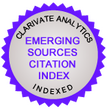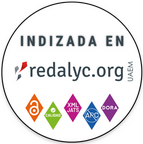BOUNDED RATIONALITY: AN ANALYSIS OF TEACHING MANUALS OF MANAGEMENT GENERAL THEORY
DOI:
https://doi.org/10.13058/raep.2016.v17n2.419Keywords:
Behavior, Organization, DimensionsAbstract
The objective of this article was to analyze how the concept of bounded rationality has been treated in the educational manuals of General Theory of Management, with the objective to analyze its quality, in terms of quality and complexity. Therefore, three educational manuals provided by the Central Library of the Alfa Federal University were used: “General Theory of Administration” authored by Motta and Vasconcelos (Manual A); “Introduction to Management” by Chiavenato (Manual B), and “Management: Theory and Processes” by Caravantes, Caravantes, and Kloeckener (Manual C). These were observed from the content analysis in four dimensions defined a priori: delimitation of the approach and quality of the references; historical-concrete dimension; relationship dimension; and theoretical dimension. The results showed that all manuals presented considerations about the bounded rationality assumption and made reference to Simon and Barnard, although they have not discussed their work and their contribution more widely. Manual A was the most complete in the axes analysis herein. Manual B turned to a summarized and synthetic theoretical discussion. Whereas C Manual defined and conceptualized bounded rationality and was the only one to describe the types of rationality presented by Simon.Downloads
Downloads
Published
How to Cite
Issue
Section
License
By publishing a manuscript in the journal Administração: Ensino e Pesquisa (RAEP), the authors declare that the work is of their exclusive authorship and therefore assume full responsibility for its content. The authors grant RAEP a non-exclusive rights license to use the work in the following ways:
(1) Sell and / or distribute the work in hard copies or electronic format.
(2) Distribute parts of the work as a whole to promote the journal through the internet and other digital and printed media.
(3) Record and reproduce the work in any format, including digital media.
Authors and readers are permitted to share the material, use it in classes, for presentations and also for other purposes, and to create new knowledge based on any RAEP publication, as long as the due credit is attributed to the original work and the respective author(s), through citations, references, and other means.
The journal adopts preventive measures to identify plagiarism using software designed for this purpose.
RAEP does not charge authors for the article submission nor for the publishing of approved articles.
In line with the journal's policies, each published article will be given a Creative Commons CC-BY 4.0 license.










